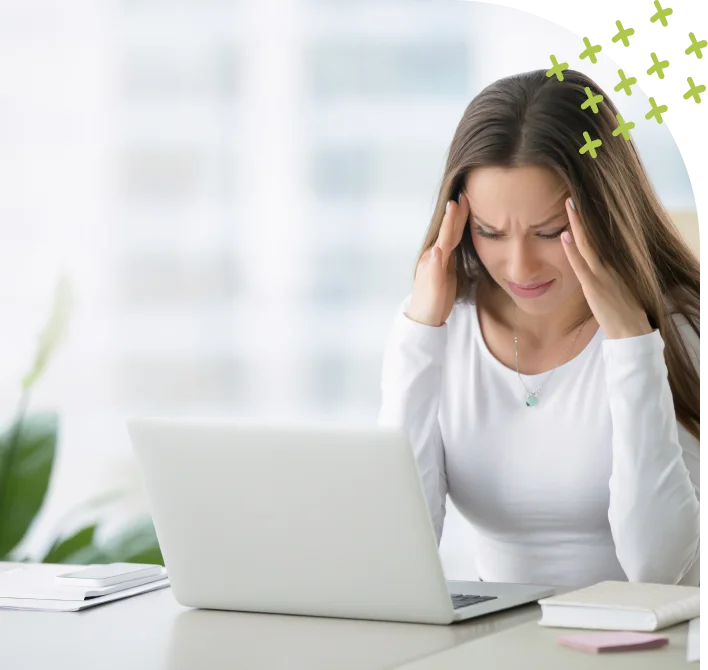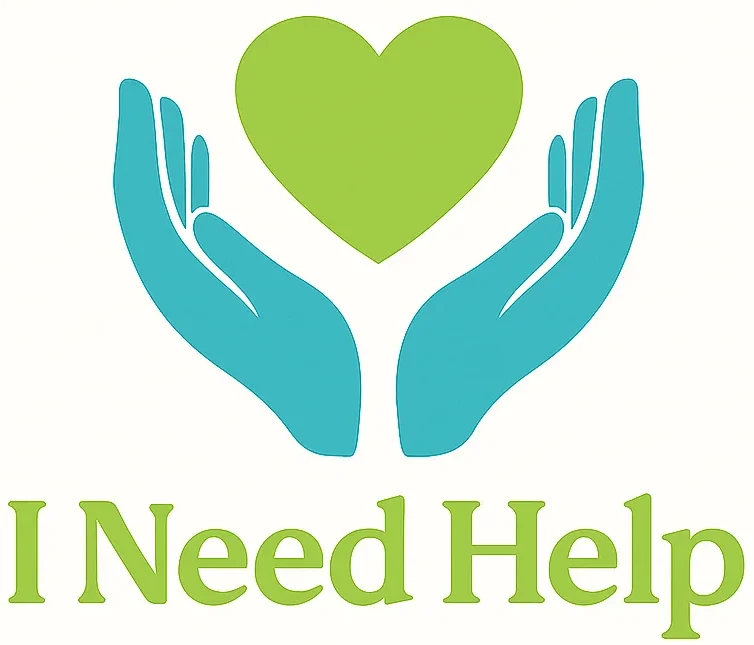Anxiety, Stress & Burnout

Anxiety, Stress & Burnout
Understanding Anxiety, Stress & Burnout
Anxiety is a normal human emotion — but when it becomes overwhelming or persistent, it can interfere with daily life. Stress is a reaction to pressure or threats. Burnout is a state of emotional, physical, and mental exhaustion caused by excessive and prolonged stress.
In South Africa, many people face intense pressure due to unemployment, financial hardship, safety concerns, and the lasting impact of trauma. These stressors can push people beyond their limits — into anxiety and eventually burnout.
Signs of Anxiety:
– Constant worrying or overthinking
– Racing thoughts
– Difficulty concentrating
– Physical symptoms: heart palpitations, sweating, chest tightness
– Trouble sleeping
– Irritability or restlessness
Signs of Burnout:
– Feeling emotionally drained and detached
– Loss of motivation
– Reduced performance at work or school
– Cynicism or hopelessness
– Constant fatigue — even after rest
Effects on Mental Health:
– Increased risk of depression
– Substance misuse
– Relationship strain
– Decreased productivity and self-esteem
What Causes It?
1. Work-Related Stress
– High workloads
– Job insecurity
– Poor management or toxic work culture
– Long hours with little rest
2. Financial Pressure
– Debt
– Unemployment
– Caring for extended family
3. Personal Life Stress
– Relationship conflict
– Parenting responsibilities
– Health problems
4. Past or Present Trauma
– Abuse, loss, violence
– Living in unsafe communities
5. High Expectations
– Perfectionism
– Social comparison
– Cultural/family pressure to “be strong”
The Biology Behind Anxiety and Stress
Anxiety is rooted in the body’s survival system. When the brain perceives a threat, it activates the “fight or flight” response, releasing stress hormones like adrenaline and cortisol. While useful in short bursts, long-term activation of this system leads to chronic anxiety, weakened immunity, fatigue, and even heart problems.
Burnout, meanwhile, is classified by the World Health Organization (WHO) as an “occupational phenomenon.” It’s not just being tired — it’s a serious form of exhaustion that affects the body’s ability to recover, mentally and physically.
Certain brain regions — like the amygdala (which processes fear) and the prefrontal cortex (which regulates decision-making) — show heightened activity in people with anxiety, while chronic stress can shrink parts of the brain linked to memory and emotion regulation.
How to Manage Anxiety, Stress & Burnout
1. Mindfulness and Breathing
– Ground yourself in the present
– Breathe deeply (inhale 4, hold 4, exhale 4)
– Try meditation apps (many local and free)
2. Talk About It
– Speak to a friend, therapist, or support group
– Don’t suffer in silence
3. Move Your Body
– Exercise, stretch, dance, walk — it helps regulate stress hormones
4. Set Boundaries
– Say “no” more often
– Protect your time and energy
5. Prioritise Sleep
– Stick to a routine
– Cut down on caffeine and screens at night
6. Seek Professional Help
– SADAG, LifeLine, FAMSA offer affordable or free counselling
– GPs and clinics can refer you for mental health support
7. Manage Expectations
– You don’t have to do everything perfectly
– Lower unrealistic standards — give yourself grace
8. Take Breaks
– Pause between tasks
– Rest is not laziness — it’s recovery
9. Journal Your Feelings
– Get thoughts out of your head and onto paper
10. Connect with Others
– Healthy relationships reduce stress and promote perspective
Cultural Considerations in South Africa
South Africa’s mental health landscape is shaped by its history of trauma, apartheid, inequality, and systemic violence. These factors mean that many people experience generational and community-wide stress.
In some communities, talking about stress or anxiety may be viewed as weakness. Men may feel pressured to “tough it out,” while women often carry multiple roles without support. Faith, family, and traditional healing practices are often central to wellness — and should be integrated with modern approaches where appropriate.
Bridging the cultural gap between mental health education and lived experience is vital. Mental wellness campaigns in isiZulu, Sesotho, Xhosa, and Afrikaans — and community-based initiatives led by respected leaders — are helping reduce stigma and increase access.
Creating a Wellness Plan
A personalised wellness plan can help prevent and manage anxiety and burnout. Key components include:
– A daily routine (sleep, meals, movement)
– Scheduled “downtime” or quiet time
– A check-in practice (journaling or rating your mood out of 10)
– A crisis plan (who to call, what helps)
– A list of triggers and coping strategies
Tools like habit trackers, WhatsApp mental health groups, and support circles in churches or clinics are valuable and cost-effective.
Real-Life Stories
Lebo, 24 – Pretoria
Lebo was in her final year of university and constantly felt anxious. “Even when I wasn’t studying, I couldn’t relax. My chest was always tight.” After visiting a campus counsellor, she learned breathing techniques and started journaling. “It’s still tough, but now I can pause before I spiral.”
Zanele, 31 – Johannesburg
Zanele worked two jobs to support her family. “I never rested. I thought if I slowed down, we’d fall apart.” Eventually, she couldn’t get out of bed. Diagnosed with burnout, she took two months off and attended counselling. “Now I ask for help. Resting doesn’t make me weak — it makes me human.”
Dumisani, 39 – Durban
As a teacher, Dumisani always felt overwhelmed. “I was irritable and snapping at my kids. I thought I was just tired, but I was burned out.” After joining a peer support circle for educators, he realised how common it was. “Now I check in with myself weekly — and I’ve stopped glorifying overwork.”
The Role of Lifestyle and Long-Term Prevention
Anxiety and burnout are often treated as crises — but long-term prevention is equally important. Adopting sustainable lifestyle changes can significantly reduce the likelihood of relapse or escalation. This includes not only habits like sleep and exercise, but also shifting how we view productivity, worth, and rest.
In South Africa, where hustle culture is often celebrated due to economic pressure, people may internalize guilt about slowing down. Culturally, success is often tied to resilience — but wellness demands intentional recovery, not constant endurance. Schools, employers, and families can all play a role in changing this narrative.
Building Emotional Resilience
Emotional resilience is the ability to bounce back from challenges. It’s not about avoiding pain, but about learning to move through it with tools and support.
Resilient people tend to:
– Practice acceptance instead of resistance
– Seek help when overwhelmed
– Engage in self-care proactively
– Maintain realistic perspectives
– Hold space for both hope and fear
Resilience can be learned. Programmes such as school-based mindfulness, workplace wellness workshops, and peer-led community sessions are proving effective in both rural and urban areas of South Africa.
Technology and Mental Health
While social media can be a source of stress, technology also holds promise for support:
– WhatsApp-based counselling and AI chat tools (like iFeelSA)
– Free mental health resources via SADAG’s SMS helpline
– Facebook groups and TikTok educators breaking stigma
– Telemedicine and virtual therapy platforms
The key is setting boundaries: limit doom-scrolling, unfollow harmful content, and schedule digital detox hours weekly.
Men and Mental Health
Men in South Africa are statistically less likely to seek mental health support. Toxic masculinity, cultural silence, and fear of stigma prevent many from opening up. Suicide rates among men are significantly higher.
Interventions that work include:
– Male-led support groups
– Church-based dialogues about emotional health
– Workshops redefining strength to include vulnerability
Mental health is not a gender issue — it’s a human issue. Campaigns such as #RealMenCry and #ManUpForMentalHealth are slowly changing the conversation.
How Communities Can Help
Mental health is not just individual — it’s communal. Stress and anxiety thrive in isolation, but they lose power in connection.
Communities can:
– Start informal support groups
– Include mental health messages in church/mosque sermons
– Host workshops with local clinics or NGOs
– Train peer counsellors in schools and workplaces
A collective approach shifts the burden off the individual and allows for shared healing.
Final Word
Anxiety, stress, and burnout are not signs of failure — they’re signals that something needs care. Whether you’re a student, a parent, a professional, or unemployed, you deserve rest, help, and healing.
The more we normalize mental health conversations in homes, taxis, classrooms, and workplaces — the more lives we can save.
You don’t have to hold it all together. Let others hold space for you.
Mental Health Resource Guide
